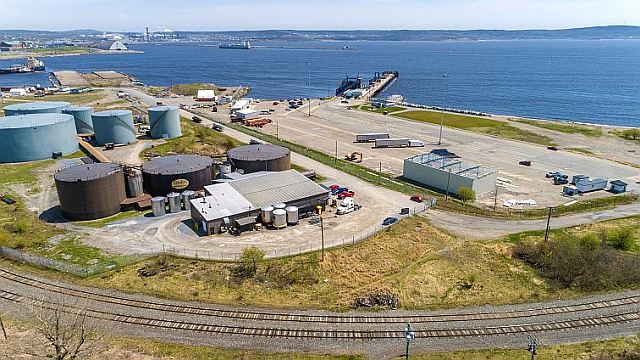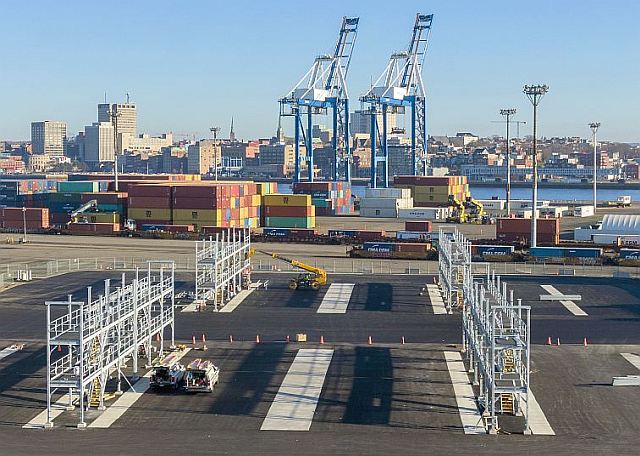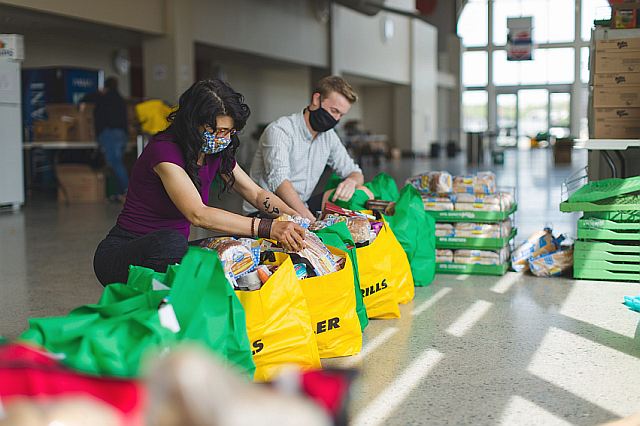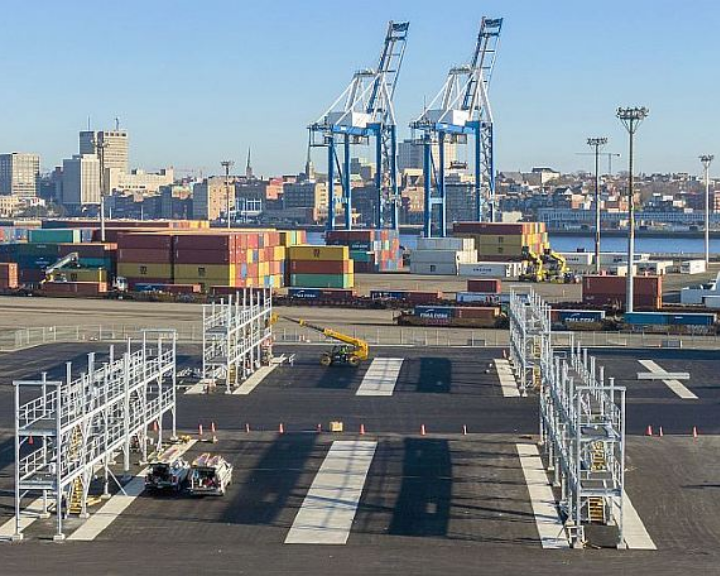Port Saint John (Canada) sees a high quality food supply as a major part of its activity, and relies on constant cooperation with its partners to develop its solutions. But public awareness of this role – which is also integral to the port’s social responsibility policy and actions to support the local community – is still too low.
Interview with Paula Copeland, Director, Engagement & Sustainability, Port Saint John (Canada)
Port Saint John has been a member of AIVP since 2020
AIVP – Port Saint John has a long-lasting relationship with clients in the food sector and supply chain, such as Crosby’s Molasses, operating from your port since 1879. Canpotex, a potash distributor, also operates out of Port Saint John. This is an example of the importance of ports in the global food systems.
What are the particularities of this type of traffic when compared to others? And how do you establish such long-lasting ties with these companies?

Paula Copeland, Director, Engagement & Sustainability, Port Saint John – The food sector is an important part of our imports and exports at Port Saint John. Our relationship with Crosby’s Molasses is our longest partnership. They import and refine over 9000 metric tonnes of liquid bulk each year. Crosby operates a liquid bulk tank storage facility including 46 food grade storage tanks and capacity ranging from 25 metric tonnes to 10,000 metric tonnes.
Nutrien and Canpotex, which are respectively a producer and distributor, contribute to quality food production via potash, which is used in fertilizers worldwide. In 2021, they exported over 1.6 million metric tonnes through Port Saint John. The potash comes to Port Saint John via rail and is exported at the Barrack Point Potash Terminal.

We build long lasting relationships with our partners by working to provide them with innovative supply chain solutions. Also, we follow our ‘inclusion model’ which aims to check in with our stakeholders to evaluate how we can be a better partner. The interactions through this framework and philosophy helps us implement changes that will continue to support a prosperous relationship.
AIVP – In our globalized world, we can find almost anything in the supermarkets thanks to food supply chains. Do you think citizens are aware of the important role of the port in the global food systems?
Paula Copeland, Port Saint John – I believe throughout the pandemic, citizens gained a higher awareness of the current supply chain issues, mostly because of the shortages we have seen. Consumers are hearing the term “supply chain issues” constantly on the news, but I’m not sure they fully understand the concept and make the connection to ports. Part of our job on the Engagement & Sustainability team at Port Saint John, is to help citizens understand our role in the movement of goods, including global food markets. We do this through social media infographics, blog posts, collaborative projects with our partners and interviews like this. We also use “International Days” such as World Food Day to create awareness.

AIVP – Port Saint John is also a frozen food hub, for example for major brands. This is yet another specific type of traffic.
Are there any particular technical challenges to preserve the cold chain?
Paula Copeland, Port Saint John – The cold chain is an important part of the supply chain that touches Port Saint John. We recently upgraded our reefer towers through the West Side Modernization Project, a $205 M infrastructure upgrade, which added 288 new plugs to the DP World Saint John Container Terminal. This resulted in significant growth for both imports and exports of cold containers from 2020 to 2021. Imports grew 490% and exports grew 42%.

As you can appreciate with this level of growth, it is also critical to ensure the available infrastructure and equipment are in place to accommodate. We are continuously working with our logistics chain partners to enable and maintain our cold chain offering at Port Saint John. This includes our rail providers right-sizing their investments and supply of refrigerated rail cars, gen-sets and clip-ons to accommodate our demand, as well as working with our terminal operator and other third parties with the investment of a cold storage facility in Saint John.
AIVP – In the local context, ports also play a very relevant social role, supporting institutions such as food banks.
What kind of aid programs and support is the Port of Saint John developing for the local inhabitants?
Paula Copeland, Port Saint John – We believe that we have a duty to support our local community and we have a major focus on the priority neighbourhoods that surround the Port. Each year, we participate and create opportunities to help our community in this area.
For example:
- Each Fall our employees help stock the pantries of 3 local high schools for students who are in need.
- We donated, under a long-term arrangement, space in a building for our regional food bank association to install a custom-built freezer and dry good distribution area for larger volume donations.
- During the holiday season, we participate in a program through our elementary schools that helps local families with groceries.
- Also, during the holiday season our operations personnel erect a large Christmas tree made of lights to symbolize the start of the giving season for a local foodbank support campaign called Harbour Lights. Each year it raises over $200,000 for local foodbanks and a few of our employees are on the Board of Directors for the campaign.
- In 2020, as the pandemic started, we offered a collective of helping agencies our cruise terminal facilities free of charge so they could safely provide an Emergency Food Program. We often provide non-profits and initiatives like this an in-kind donation of our space.






